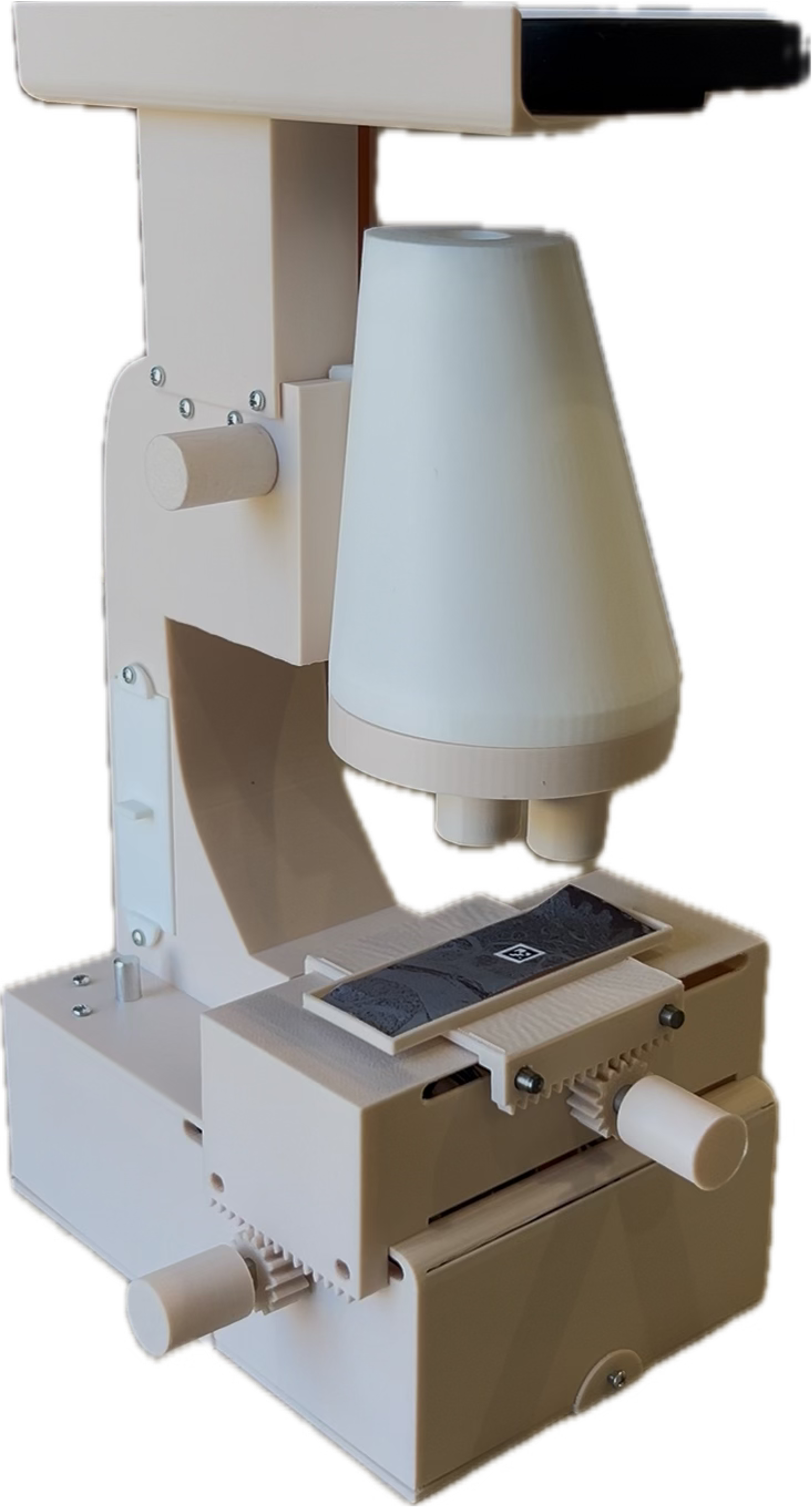
Smartphone-Enabled Microscope for Situated Science Learning
Elizabeth Childs, Isha Jain, Josephine Miko, Trisha El Chemaly, Ashley Neall
In many classrooms worldwide, students learn about cells and microorganisms from static textbook images because procuring and maintaining microscopes is prohibitively expensive. This project reimagines microscopy as a hybrid tangible–digital experience: learners handle a physical device with real knobs and objectives, while a connected smartphone displays high-resolution biological imagery synchronized to their actions. The aim is to preserve the embodied practice of science—focusing, changing magnification, and exploring slides—without the cost and fragility of traditional lab equipment.
Why a Hybrid Microscope?
- Tactile learning matters. Authentic lab work depends on muscle memory and spatial reasoning that simulations rarely capture. Our design keeps those gestures at the center.
- Smartphones are everywhere. With more than 80% global adoption, a phone becomes the display, computation platform, and connectivity backbone for the experience.
- Accessible hardware. Off-the-shelf microcontrollers and 3D-printed components reduce the per-unit cost to a fraction of commercial microscopes, easing deployment in resource-constrained schools.
Conducting Situated Studies Through Interactive Technologies
We partner with teachers in under-resourced districts to run situated classroom studies. Rapid prototypes are co-designed with educators, then deployed during actual inquiry lessons to observe how students manipulate the microscope, collaborate, and articulate discoveries. Field notes, video capture, and student reflections inform the next iteration—ensuring the hardware, software, and curricular materials support real-world lab constraints rather than idealized scenarios.
Early Insights
- Students instinctively narrate their observations while adjusting the tactile controls, suggesting design opportunities for audio capture and automatic annotation.
- Teachers value being able to preload slide libraries tied to state standards, making it easy to align the experience with existing lesson plans.
- Quick-swap component shells let classes share devices while swapping sanitizable slide trays between groups.
Technical Overview
- Focus knob: A rotary encoder adjusts the objective carriage, mirrored as fine-grain focal changes on the smartphone display.
- Objective turret: A magnetic detent array signals changes in magnification, dynamically swapping the image set and revealing zoomed-in microstructures.
- Slide stage: Two-axis potentiometers track lateral specimen movement, enabling virtual slides to pan smoothly with each student’s input.
- Illumination: Programmable LEDs mimic condenser adjustments, teaching the relationship between lighting and contrast.
Demo
Demo video of microscope.